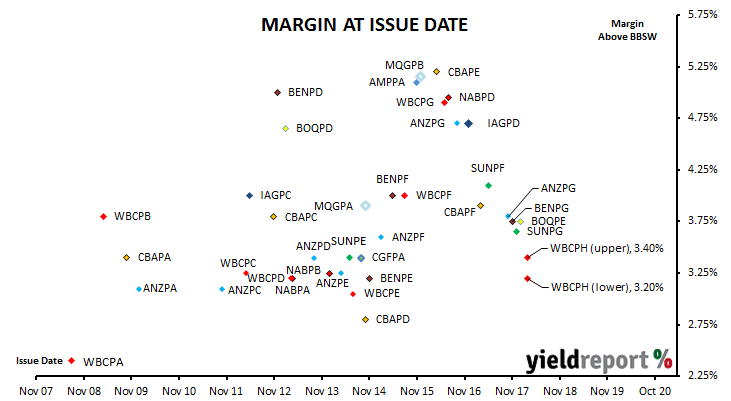As the optional exchange date of any hybrid listed on the ASX approaches, speculation typically turns to the likelihood of some sort of replacement security. Experience over the years suggests hybrids are usually redeemed or “resold” and not converted into ordinary equity. In order to maintain balance sheet ratios, additional equity capital must be raised. In recent years, most companies in this situation have chosen to issue another hybrid.
Westpac CPS (ASX code: WBCPC) have a March 2018 optional conversion/redemption date and so the market was not surprised to see Westpac’s announcement for the issue of hybrid securities. Westpac plans to issue $750 million worth of Capital Notes 5 (ASX code: WBCPH), with the ability to raise more or less than this amount. The new securities will be perpetual, convertible, subordinated, unsecured notes and the proceeds will be used for what Westpac refers to as general purposes. While Westpac does not specifically mention the CPS, it is generally accepted Westpac will use the proceeds to partially fund their resale/transfer.
The new notes have some features in common with equities and some features in common with debt securities. Distributions are at the discretion of directors but they are calculated according to a set formula with reference to the $100 face value of the securities. The notes will qualify as Additional Tier 1 (AT1) capital under the Basel III bank regulatory framework, which means they have the now-standard “trigger events” clauses which may lead to early conversion into ordinary shares or a write-off of the capital notes should APRA require it. In the event Westpac is wound up, its hybrids would rank above ordinary shares but below ordinary debt securities and other liabilities.
The new capital notes have an indicative distribution rate equivalent to 3 month BBSW plus a margin of 320bps to 340bps. The final margin will be determined by a “book build” on 12 February 2018. A book build is a tender process managed by investment banks on behalf of the issuer in which investment institutions each place bids for a set volume at a price/yield. (This is the same way as the AOFM holds tenders to sell government bonds each week). If recent history is any guide, then the margin is likely to be set at the lower end. Dividends will be non-cumulative, at the discretion of Westpac directors and paid quarterly in arrears. At the prevailing level of interest rates and if the margin is at the lower end of the range, the new notes will pay just under 5.00% (annualised) inclusive of franking credits. As interest rates change, specifically the bank bill swap rate, quarterly payments will also change.

